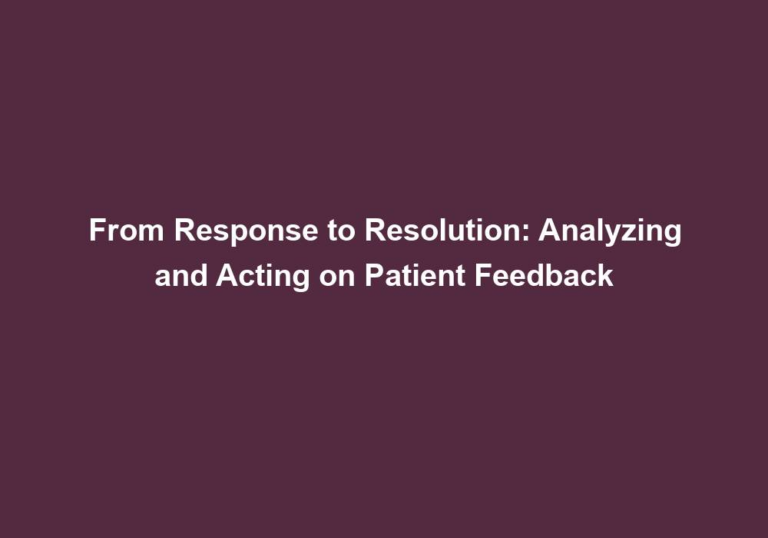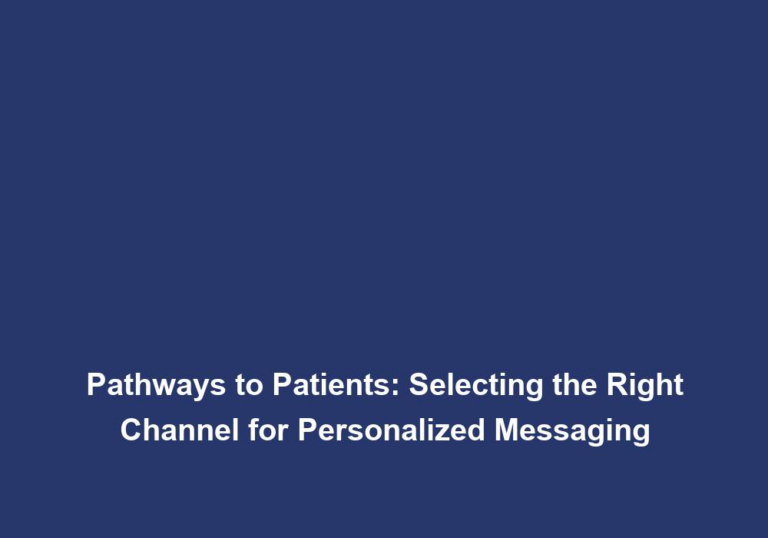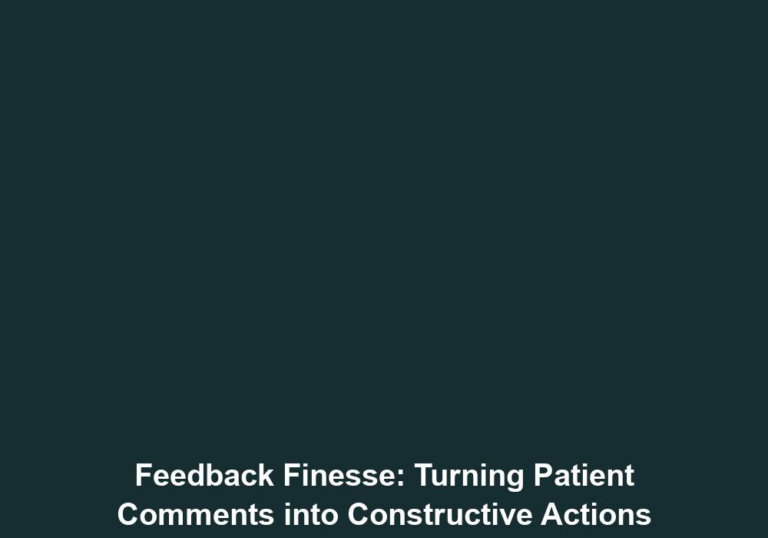Crafting Care: The Art of Personalized Patient Messaging
In today’s healthcare landscape, the importance of personalized patient messaging cannot be overstated. Effective communication plays a pivotal role in delivering quality care and ensuring patient satisfaction. As a healthcare provider, crafting personalized messages that resonate with your patients can foster trust, encourage engagement, and ultimately improve health outcomes. This article explores the art of personalized patient messaging, providing insights and strategies to enhance communication in the healthcare setting.
The Power of Personalization
When it comes to patient messaging, one size does not fit all. Personalization is key to capturing patients’ attention, building strong relationships, and tailoring care plans to individual needs. By addressing patients by their names, acknowledging their unique circumstances, and understanding their preferences, healthcare providers can create a deeper connection with their patients.
Benefits of Personalized Patient Messaging
-
Increased Engagement: Personalized messages can capture patients’ attention and motivate them to actively participate in their healthcare journey. This engagement leads to better adherence to treatment plans, improved health outcomes, and reduced healthcare costs.
-
Enhanced Trust: By demonstrating a genuine understanding of patients’ needs and concerns, personalized messaging builds trust between healthcare providers and patients. This trust is essential for effective collaboration and shared decision-making.
-
Improved Patient Satisfaction: When patients feel heard, understood, and cared for, their satisfaction levels increase significantly. Personalized patient messaging creates a positive patient experience, which can lead to patient loyalty, positive reviews, and referrals.
-
Better Health Outcomes: Tailoring messages to patients’ specific health conditions, goals, and preferences empowers them to take an active role in their healthcare. This shared decision-making approach leads to improved treatment adherence and better health outcomes.
Strategies for Crafting Personalized Messages
Now that we understand the importance of personalized patient messaging, let’s explore some strategies to master this art:
1. Gather Patient Data
Collecting relevant patient information is a crucial first step in crafting personalized messages. This data can include demographics, medical history, lifestyle factors, and communication preferences. By utilizing electronic health records (EHRs) and patient surveys, healthcare providers can gain valuable insights into patients’ needs and preferences.
- Obtain demographic information such as age, gender, and location to understand the patient’s background.
- Collect medical history to identify any existing conditions or previous treatments that may impact the messaging.
- Consider lifestyle factors such as occupation, hobbies, and interests to personalize the content further.
- Determine communication preferences, whether patients prefer email, phone calls, text messages, or other methods.
2. Segment Your Audience
Once you have gathered patient data, segment your audience based on common characteristics, such as age, gender, health conditions, or treatment plans. Segmenting allows you to tailor messaging to specific groups, ensuring that the information provided is relevant and resonates with each segment.
- Create distinct patient personas based on demographics, medical conditions, and other relevant factors.
- Craft messages that address the specific needs and concerns of each segment.
- Consider the different goals and preferences of each segment to provide personalized recommendations and resources.
3. Use Emotive Language
To create a connection with patients, use empathetic and emotive language in your messages. Show genuine concern and compassion, and highlight how your care can make a positive impact on their lives. This approach helps patients feel understood and valued.
- Use words and phrases that convey empathy, such as “We understand how challenging it can be.”
- Show appreciation for patients’ efforts and acknowledge their progress, fostering a sense of support.
- Share success stories or testimonials from other patients to inspire and motivate.
4. Offer Relevant Information
Personalized messages should provide patients with useful and timely information. Consider patients’ health conditions, treatment plans, and preferences when crafting messages. For example, if a patient has recently been diagnosed with diabetes, provide educational materials and resources specific to diabetic care.
- Share educational resources tailored to the patient’s specific condition or treatment plan.
- Provide updates on any relevant research, advancements, or new treatment options.
- Offer tips and strategies for managing symptoms or adhering to treatment plans.
5. Leverage Technology
Technology can greatly facilitate personalized patient messaging. Use patient portals, email, text messaging, and social media platforms to deliver tailored messages. Automated systems can also be used to send reminders, appointment notifications, and personalized health tips.
- Utilize patient portals to securely communicate with patients and provide access to personalized information.
- Send automated reminders for appointments, medication refills, or recommended screenings.
- Use email or text messaging to share relevant updates, educational materials, and personalized recommendations.
6. Ensure Clarity and Simplicity
While personalization is crucial, it’s equally important to ensure that messages are clear and easy to understand. Avoid medical jargon and use simple language to explain complex concepts. This approach helps patients feel informed and empowered to make informed decisions.
- Use plain language to explain medical terms and procedures.
- Break down complex information into digestible sections or bullet points.
- Provide visual aids or infographics to simplify explanations and enhance understanding.
The Role of SEO in Personalized Patient Messaging
Search engine optimization (SEO) plays a vital role in ensuring that your personalized patient messages reach your intended audience. By optimizing your content with relevant keywords, creating informative and engaging articles, and improving the overall user experience on your website, you can increase your online visibility and attract more patients.
- Conduct keyword research to identify relevant terms and phrases related to your personalized patient messaging.
- Incorporate these keywords naturally into your content to enhance search engine visibility.
- Create informative and engaging articles that address patients’ needs and provide valuable insights.
- Improve the user experience on your website by optimizing page load times, mobile responsiveness, and navigation.
Conclusion
Crafting personalized patient messages requires a deep understanding of patients’ needs, preferences, and health conditions. By leveraging the power of personalization, healthcare providers can enhance patient engagement, foster trust, and ultimately improve health outcomes. With the right strategies and a patient-centered approach, healthcare organizations can excel in the art of personalized patient messaging, revolutionizing the way healthcare is delivered and experienced.







